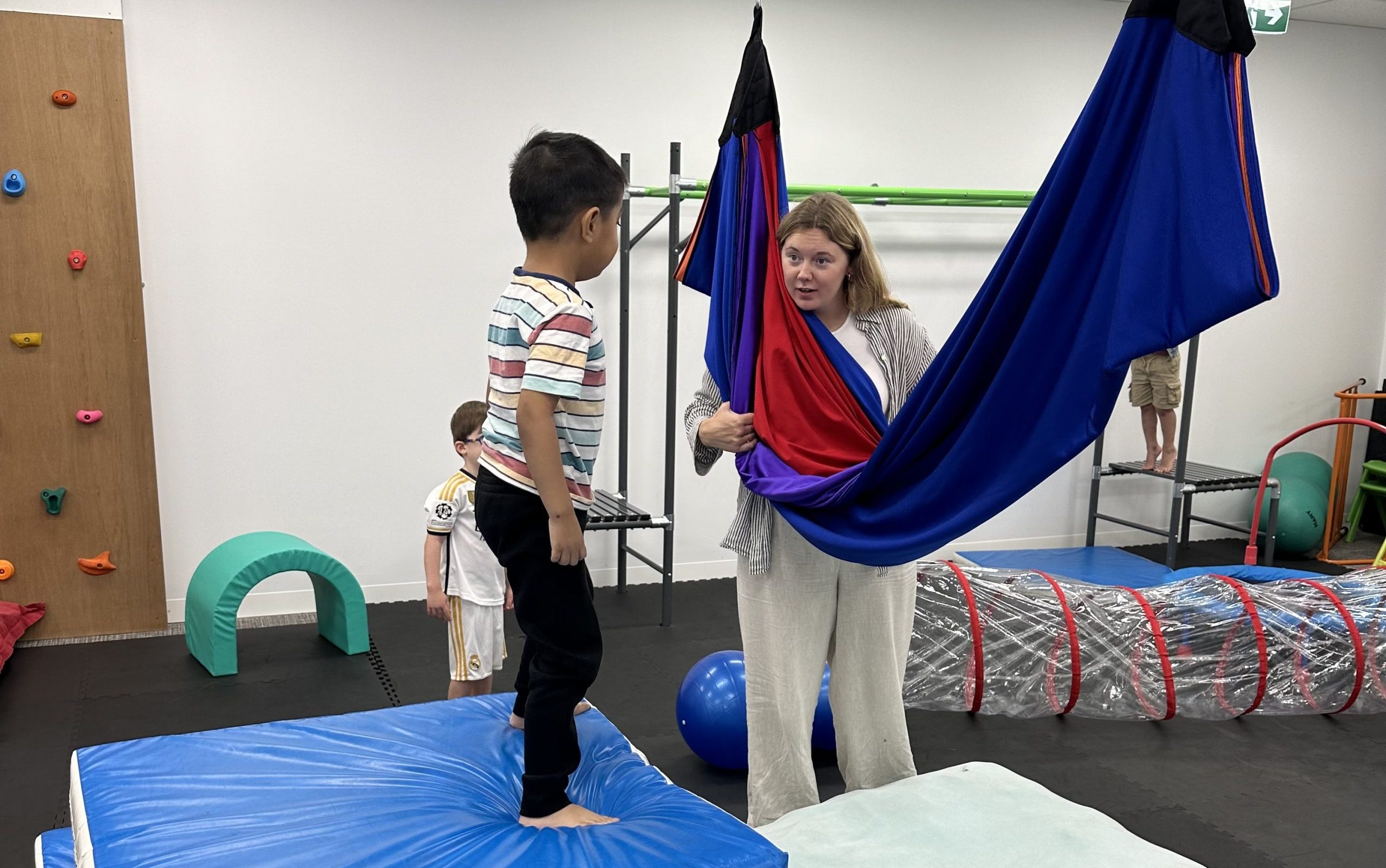
How to Create a Sensory-Friendly Environment at Home: Tips from Occupational Therapists in Bondi Junction and Mascot
Creating a sensory-friendly environment at home is essential for children with sensory processing challenges, including those with autism spectrum disorder (ASD) or sensory processing disorder (SPD). A well-designed space can significantly reduce stress, improve focus, and enhance your child’s overall well-being. Here’s a guide to setting up such an environment, along with insights from our Occupational Therapists at OneOnOne Children’s Therapy in Bondi Junction and Mascot.
Understanding Sensory Processing
What is Sensory Processing?
Sensory processing refers to how the brain receives and interprets information from the senses—such as sight, sound, touch, taste, and smell. For most children, this process occurs naturally, but for children with sensory processing challenges, it can be overwhelming or underwhelming.
Signs of Sensory Processing Issues
- Overreacting to Sensory Input: Your child may cover their ears to block out noise or avoid certain textures.
- Underreacting to Sensory Input: Some children seek intense sensory experiences by jumping, spinning, or touching everything.
- Coordination Issues: Tasks like writing or using utensils may be challenging.
- Emotional Reactions: Sensory overload often leads to meltdowns or high anxiety.
An Occupational Therapist can help identify and manage these issues through tailored Occupational Therapy programs in Bondi Junction or Mascot.
Steps to Create a Sensory-Friendly Environment
1. Identify Your Child’s Sensory Preferences
Every child’s sensory needs are unique. Start by observing your child’s reactions to various stimuli and consider completing a sensory profile with the help of an Occupational Therapist. This will help you better understand whether your child is a “sensory seeker” or “sensory avoider” and guide your efforts.
2. Create Sensory Zones
Design specific areas in your home dedicated to different sensory activities:
- Calm Zone: A quiet space filled with soft lighting, pillows, and blankets where your child can relax.
- Active Zone: An area for physical play that might include a swing, trampoline, or climbing structures to encourage movement.
- Creative Zone: A designated space for tactile play like working with playdough, water, or sand to stimulate fine motor skills.
3. Modify the Physical Environment
Making small changes to the home can make a big difference in creating a sensory-friendly space:
- Lighting: Opt for soft, adjustable lighting to prevent harsh glare. Natural light is ideal, but dimmable lamps or fairy lights also work well.
- Sound: Reduce background noise by adding rugs, curtains, or white noise machines to dampen sound.
- Textures: Offer a variety of sensory-friendly textures in furniture and toys that your child enjoys.
- Colour Scheme: Choose calming colours like blues and greens for a more soothing atmosphere.
4. Provide Sensory Tools and Equipment
Incorporating the right tools into your child’s daily routine can have significant benefits:
- Weighted Blankets: Deep pressure from weighted blankets can help your child feel calm and secure.
- Fidget Toys: Small objects that provide tactile stimulation can assist with focus and self-regulation.
- Therapy Balls or Swings: These tools help improve balance and coordination, key aspects that an Occupational Therapist may focus on during therapy.
- Sensory Bins: Fill bins with sand, rice, or other tactile materials for fun, hands-on exploration.
5. Establish Predictable Routines
Children with sensory challenges often feel more comfortable with structure. Establish a consistent routine that includes sensory breaks throughout the day. Use visual schedules and timers to help your child understand what’s coming next, reducing anxiety and sensory overload.
6. Encourage Active Play
Physical movement is vital for children’s sensory regulation. Activities like jumping, running, or swinging help children release pent-up energy and regulate their sensory systems. Outdoor play also offers valuable natural sensory experiences, such as feeling the breeze or smelling flowers.
How Occupational Therapists in Bondi Junction and Mascot Can Help
An Occupational Therapist can provide invaluable guidance when setting up a sensory-friendly home. Here’s how we can help:
- Sensory Assessments: Our therapists can conduct a detailed assessment to pinpoint your child’s sensory needs and preferences.
- Sensory Diets: We develop customised sensory diets—a collection of sensory activities designed to help your child manage sensory inputs throughout the day.
- Recommended Tools: We suggest sensory tools tailored to your child’s needs, such as weighted blankets, fidget toys, and swings.
- Parent Training: We provide training and support to help parents implement sensory-friendly strategies at home.
- Collaboration: Our team works with other professionals—teachers, speech therapists, and psychologists—to create a comprehensive approach that ensures consistency across home and school environments.
Practical Tips for Parents
- Be Patient: Creating a sensory-friendly environment takes time and observation. Pay attention to what works and adjust as needed.
- Involve Your Child: Let your child have a say in choosing textures, tools, and colours that make them feel comfortable.
- Introduce Changes Gradually: Make small adjustments over time to avoid overwhelming your child.
- Maintain Communication: Keep an open dialogue with your child about their sensory experiences.
Conclusion
A sensory-friendly environment at home is crucial for children with sensory processing challenges. With the right adjustments and support from an Occupational Therapist, you can create a space that enhances your child’s quality of life. Whether your child has autism, sensory processing disorder, or other developmental delays, our expert Occupational Therapists in Bondi Junction and Mascot can guide you in creating an environment where your child can thrive.
If you’re ready to set up a sensory-friendly home or need professional advice, contact OneOnOne Children’s Therapy. Our experienced team of Occupational Therapists is here to help you create the best possible environment for your child’s development. We are members of AHPRA.
Call our Bondi Junction or Mascot clinics at (02) 80657837 or email us for a consultation today.
